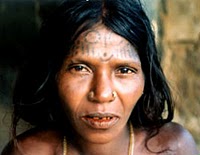Are you looking for Kurumba: The Nilgiri Tribe then check out this post to know more. India is the second-largest country with a tribal population in the world with around 645 tribes and sub-tribes. According to the Census of India 2011, the population of scheduled tribes is 104,545,716 and 8.63 percent of the total population in India.
The indigenous minorities are officially regarded as ‘scheduled tribes’ by the India Government. These tribes are considered to be the actual habitats of the subcontinent. They are very rich in culture, with different clothing, food habits, languages, music, etc.
The Nilgiri Tribe
The Southern part of India has a very dense population of ethnic groups and tribes. The Nilgiri district is a part of Tamilnadu state of Southern India, where the name Nilgiri or ‘Blue Mountain’ was given to the range that spread across the borders of Karnataka and Kerala.
Four Indigenous tribes occupy most of the Nilgiri hills. These tribes are mainly Kota, Toda, Kurumba, and Irula. The Kurumbas are living in the sub-divisions of Coonoor, Kothagiri, Kundha, Gudalur, and Pandalur of Nilgiri district of Tamilnadu. Kurumbas are considered to be very old inhabitants of the Nilgiri hills.
The origins of the different Kurumba groups are debatable but Kurumbas of Nilgiri district claims that they trace their origin and migration with the boarders of Waynad and Attapady of Kerala and Gundalpet of Karnataka in and around Nilgiri plateau. And only these Kurumba groups of the Nilgiri district are included as Scheduled Tribes.
The legend that goes around regarding the birth of these tribes is that the Toda, Kurumba, and Kota tribes were brought into existence by a ‘parent creator’. The creator of the supernatural power had three sons. The three brothers were assigned to different functions in life and they were told to exchange goods and services among themselves.
Their father assigned them these works due to transgression against the parents and quarreling among themselves. The descendants of these three brothers became the three tribes and the peoples have been bound in a common fate from then onwards.
The tribe is often referred to as Kurumba, Kuruba, Kuremna, and Kuruman. The Kurumbas of the Nilgiri district of Tamilnadu prefers to call themselves kurumbar. The etymological meaning of Kurumba is the ‘one who tends sheep’. Although the traditional occupation of the tribe includes collecting tubers, vegetables, fruits, bark and roots, honey, beeswax, resin, vines, and timber.
The Kurumba people possess a detailed knowledge regarding medicinal plants. Honey is the most valued and important forest good for the tribe to be collected and preserved. Also, they practice shifting cultivation, foraging and trapping of small birds and animals. But the ever-growing civilization changed the lifestyles of Kurumba people. They now started working outside the forests, engaging in various labors and other work.
The traditional Kurumba clothes for women were a piece of cloth wrapped under the arms with a fold on top that reaches up to the knees. The men used to wear a loincloth. But in the present day, the clothing and fashion sense is similar to mainland India.
The kurumba tribe has five major divisions under it according to their residence, traditional occupation, dialects and clan, and social organization. Together the Kurumba groups compose the smallest and the poorest proportion of the Plateau population.
The Jenu Kurumba and the Betta Kurumba are predominantly seen in the Nilgiri. Each Kurumba group has its own set of cultures, norms and belief systems, but they still contain a lot of common similarities and interests. These Kurumba groups are;
1. Alu or Pal Kurumbas – Alu or Pal means milk
2. Jen Kurumbas – Jen means honey
3. Urali Kurumbas – Urali means village
4. Betta Kurumbas – Betta means hill
5. Mullu Kurumbas – Mullu means net
The Kurumbas did not have any god or any particular religious belief. The Kurumba tribe, like most of the other indigenous tribes, believes in ancestral worship and prays to the elements of nature like rocks, trees, animals, etc. They worship in the form of songs, folklore, and legend.
This oral culture of the Kurumba tribe is the key element in their culture, through which they preserve their collective memory. The tribe practices the dialect of Kannada, South Dravidian language, and Tamil, while for the written purpose they use Tamil. The Kurumba society is a patrilineal one with tolerance towards love marriage and marriages outside their tribe.




